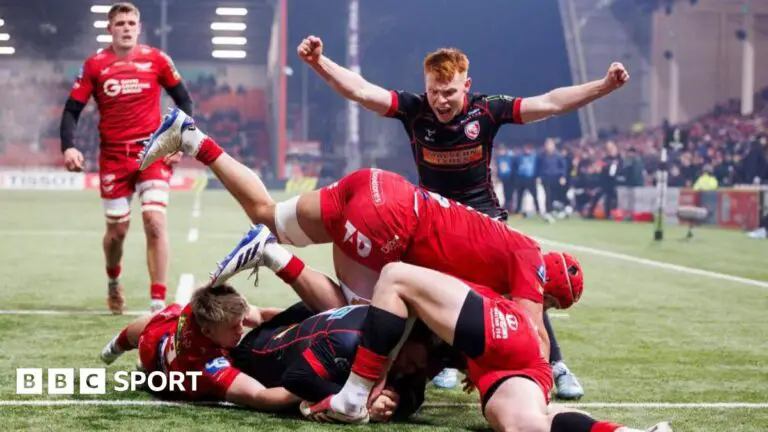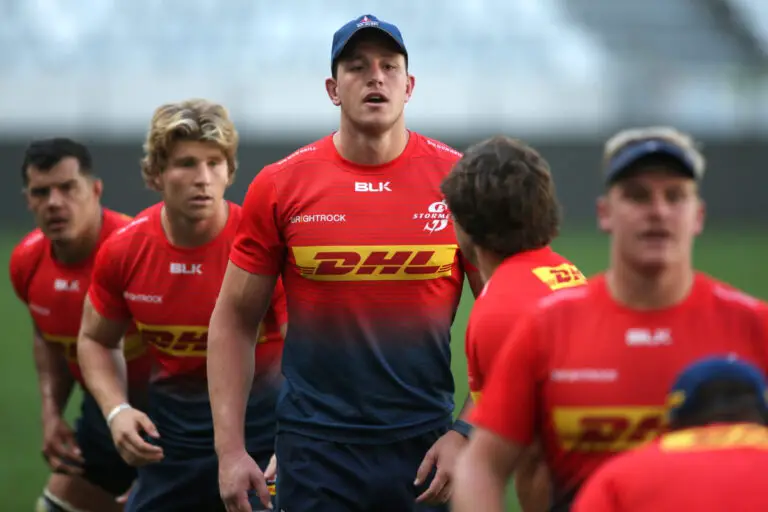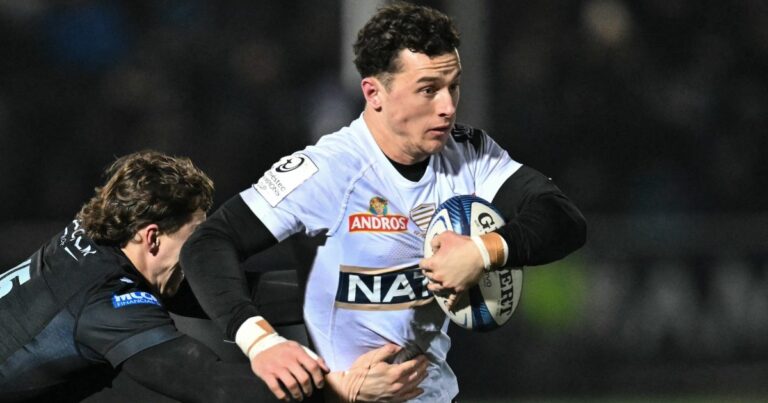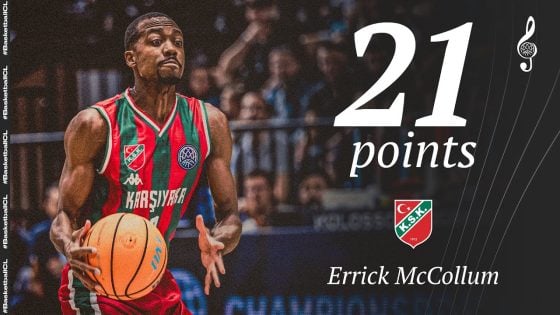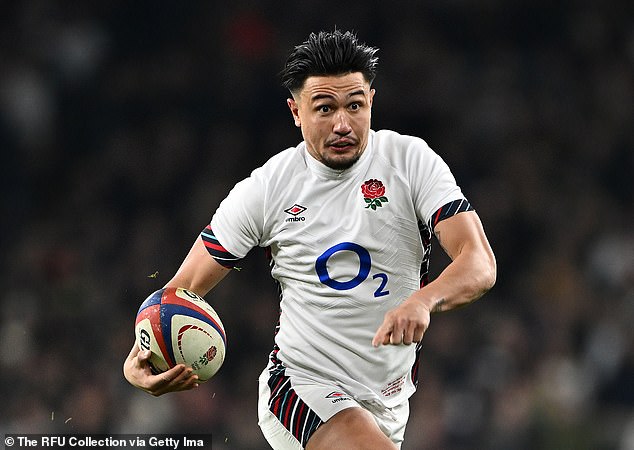
This weekend, they will both wear 10 for their clubs, as usual, for tough fixtures in France, in the Investec Champions Cup. But early next month, Marcus Smith and Fin Smith are set to form a new double-act for England.
Time will tell how long it lasts, but all the indications are that Steve Borthwick is preparing to build his England back line, at least temporarily, around Smith and Smith; not a sibling law firm but a playmaker partnership. Fin at 10 and Marcus at 15 – the position left vacant while George Furbank completes his recovery from a broken arm. Once the Saints captain is fit and available, the England line-up may change again. Long-term planning is unclear. A quick fix is in order.
For now, the endless, perennial fly-half debate and dilemma is expected to take another twist, as the selection wheel turns yet again.
Having made six appearances as a replacement, 22-year-old Fin is on course to be thrust into the hot seat and asked to run the show. If so, it would be due reward for his composure and creativity in orchestrating a Premiership title triumph last season and continuing to showcase his formidable repertoire in the current campaign.
If Borthwick does adopt this approach, as expected, it would be a meritocratic call, but arguably not at the ideal juncture. Circumstances have forced his hand, after he chose not to try out the Smith-and-Smith alliance at the end of the gruelling Autumn Nations Series, for the home banker against Japan. If it was even the smallest seed of an idea in the coaches’ minds, that would have been a prime opportunity to experiment, but it was not taken.
Instead, England’s head coach is now gearing up to roll the dice in Dublin, for the Six Nations opener against title holders Ireland on February 1. With that game and Le Crunch at home against France in the first block of championship fixtures, the pressure is on for the ploy to work, or the consequences could be profound.

Marcus Smith looks set to switch to full-back when England’s Six Nations campaign starts

Northampton’s Fin Smith is expected to play at 10 as Steve Borthwick shuffles his pack again

Borthwick is looking for a quick fix, but is yet to figure out who he wants as his long-term No 10
Marcus Smith had made the 10 shirt his own during the summer tour of Japan and New Zealand, followed by that ill-fated November campaign, which featured defeats against the All Blacks, Australia and South Africa, before the routine demolition of Japan. In the course of those four Tests, it felt as if England’s attack only ignited when he pulled a rabbit out of a hat. Every positive, threatening moment came from the 25-year-old Harlequin, or so it seemed.
He was taken off by Borthwick midway through the second half against New Zealand and it sparked outrage in the stands. Tellingly, Smith played the full 80 the following week against Australia. But he ended up at full-back when George Ford was brought on, and was complicit in the Wallabies’ last-play, match-winning try as he cut in to make a tackle, allowing Max Jorgensen to storm down the vacated wide channel to touch down.
The over-view perception is of Smiths with significantly different qualities. In summary, Fin is seen as the facilitator for others – a conductor and organiser and calm head.
In contrast, Marcus is regarded as the dashing maverick, more likely to produce the magic moment but criticised for not igniting the players around him consistently enough. He is often damned as being all about flashes of box-office brilliance, without being capable of steadily, relentlessly driving the team on.
Based on the latest evidence, the criticism is harsh. In November, Marcus Smith repeatedly delivered the breakthrough moments. Against the All Blacks, he made an interception and break then – under fatigue – had the presence of mind to delay his pass so that Immanuel Feyi-Waboso had a clear run to the line.
Then, against the Springboks, Smith dummied to drop a goal, broke to the blindside and set up a stunning strike for Ollie Sleightholme. It was an act of sheer genius against one of the world’s top defences.
Rewind a year and the picture was very different. Marcus Smith was due to be in favour at 10 for the start of the Six Nations, only to suffer an untimely injury during the pre-championship training camp in Girona. Ford took over at 10 and after a stuttering start to the tournament for him and the team, the veteran was outstanding, at the vanguard of a tactical liberation.
Ford was good in the one-point win against Grand Slam-chasing Ireland at Twickenham, and a week later he delivered a masterpiece performance as England so nearly upset France in Lyon – playing with a daring freedom which was breathtaking to behold. The Sale player was evidently enthused by the new strategic direction, which allowed him to play flat to the line and instinctively.

Marcus Smith was partly to blame for Australia’s match-winning try when playing at full-back

But he provided a brilliant break and pass to set up a try against New Zealand

His quick-thinking also opened up space for Ollie Sleightholme to touch down vs South Africa
Such was the magnitude of his personal contribution, Ford was widely seen as having re-asserted his command in the primary playmaker role. However, an achilles injury kept him out of the summer tour, which allowed Marcus Smith to seize the shirt and the initiative once more.
Now, another change is looming. Perhaps Borthwick will end up adopting a horses-for-courses policy in the way he selects and rotates his 10s, depending on the circumstances and the opposition. That could be construed as a ditherer’s curse or a smart solution. The Boks have a similar approach in the way they mix and match, mostly between Manie Libbok and Handre Pollard.
England have a recent history of it too, such as at the 2019 World Cup, when Eddie Jones deployed Ford and Farrell, then Farrell with Manu Tuilagi and Henry Slade against the physical Wallabies, before reverting to the Ford-Farrell axis for the semi and final in Japan.
For years; that was the contest and debate; Farrell or Ford, or both? Jones valued them both, which often meant Ford at 10 and Farrell, even as captain, at 12. Then it was Farrell v Marcus Smith. Then it was Farrell AND Smith. Then it was Ford v Smith, then Smith v Smith. Now Smith AND Smith.
How will the name-sakes function together? Well, magic Marcus played well after being switched to 15 during the last World Cup, although he was battered by powerful Fiji in the quarter-final and Ireland are bound to target him in the air in Dublin.
But he likes to float behind the attacking line and scan for openings, which he could do by acting as the secondary ball-player, with Fin playing closer to the opposition defence. In theory, they could knit together well, despite limited preparation time.
Who will be primary kicker? Fin Smith was shaky in that regard last Sunday before winning the game against Bath with a last-minute penalty for Northampton. Marcus Smith has been a revelation off the tee since missing three crucial shots against the All Blacks in Dunedin. He has landed 27 of his last 28 shots at goal and credits the input of Jonny Wilkinson and club-mate Leigh Halfpenny – the former Wales and Lions full-back and goal-kicker supreme.
There is a defensive factor, as part of the selection equation. Fin Smith is a force in this area and that will not be lost on Borthwick. He was in attendance to watch the rookie Saint deliver a statement hit on Bath flanker Miles Reid at Franklin’s Gardens last weekend, which showed his power and desire to impose off the ball as well as on it.

Marcus and Fin Smith have different strengths, and Borthwick needs to decide what he wants

He needs to make a call on his kicker after Fin Smith’s shaky display from the tee last week

George Ford is also not out of the No 10 mix, having already won 98 caps for his country
There is an ownership aspect to all this. Who truly runs the show? In Cape Town in 2018, Jones picked Danny Cipriani at 10, but Farrell exerted himself as captain to almost force the recalled fly-half out of the game. When Farrell and Smith joined forces, it created a difficult dynamic, with a sense of the senior man always looking over the younger man’s shoulder.
Marcus Smith is the established one. He has won Test matches. He has played at a World Cup and on a Lions tour. Fin Smith is still finding his way at the top level. Dublin is a difficult place for anyone to make a first start for their country. For all his acclaimed authority and assurance at a young age, it will be a daunting scenario.
Don’t rule out Ford. At 31, he is not out of the picture, far from it. He is recovering from a minor hip injury but is just two caps away from a Test century. If the two Smiths operate in tandem in Dublin and against France at Twickenham seven days later, there is unlikely to be a match-day role for him, as Borthwick won’t need three fly-halves on duty in the 23. But Ford is too good to be finished. He is still the finest judge of pass timing and depth in English rugby.
It feels like, when it comes to the never-ending No 10 debate, tough decisions have often been dodged. Ways have been found to fudge it. But when Furbank returns, as he will, what then? What if it really works? What if it is a disaster? At some point, Borthwick knows that he will have to make a big call. The Smith-and-Smith option has the feel of a stop-gap or a last-quarter trump card, rather than a long-term formula.
